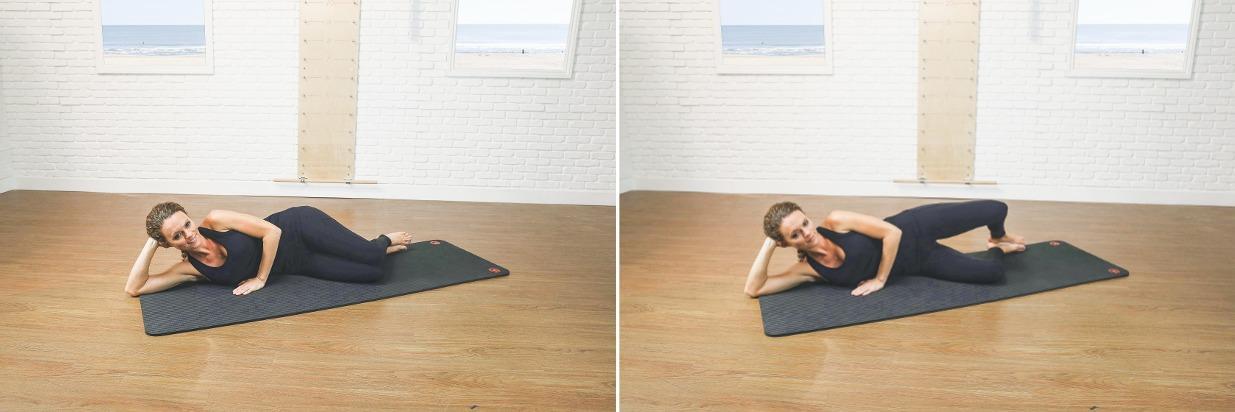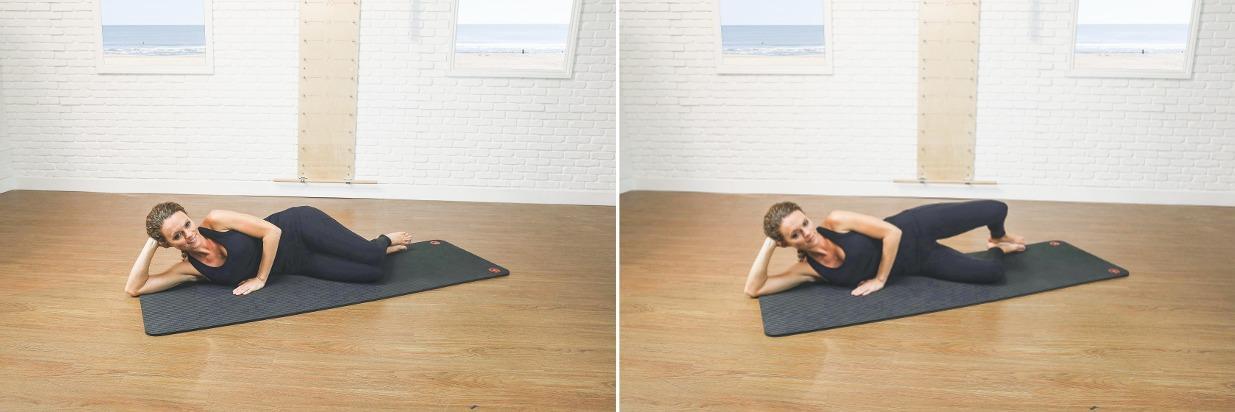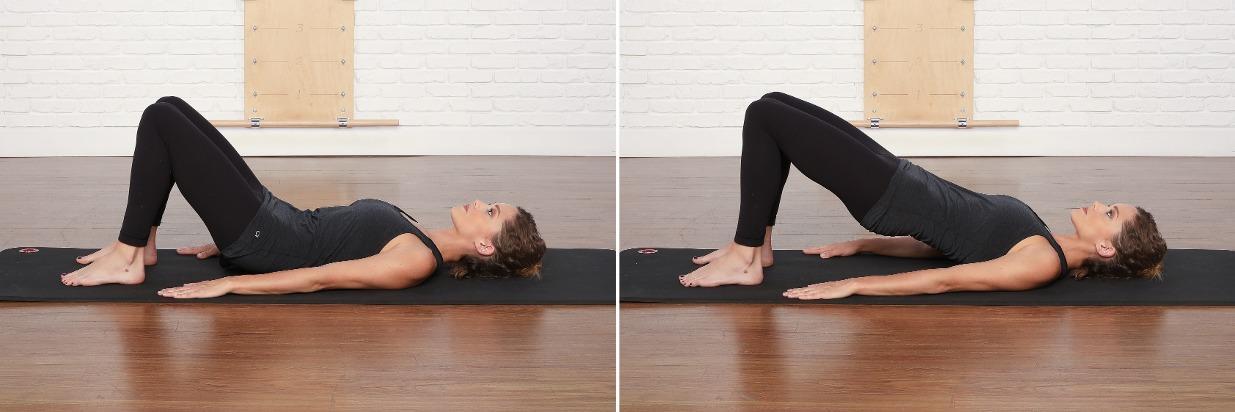When you work your 'core' - what muscles are you actually using? The core is comprised of muscles on all sides of the torso. The deep inner unit includes the spinal muscle, the diaphragm, the pelvic floor muscles, and the transversus abdominis. The outer core includes back extensors, hip extensors, gluteus maximus, and gluteus medius, rectus abdominis, internal and external obliques as well as the latissimus dorsi and serratus anterior muscles. Whew!
These next 5 movements engage and strengthen your core as well as stabilize the back while moving your extremities. They focus on functional movement that will ripple into your day to day life!
Bird Dog:
This is a great whole-body movement that works against gravity and challenges your stability. This focuses more on the posterior chain (backside) of the body.
- Start kneeling on all fours, holding your spine and head in a long line, neutral position.
- Reach one arm out long in front of your body and the opposite leg out long behind your body.
- Lift that arm and leg off the floor aiming for parallel to the ground without rotating the hips.
- Do 5-10 repetitions on each side.
For beginners: Try lifting one arm at a time or one leg at a time to start.
To increase the challenge: Once you've lifted the arm and leg, pull the knee and elbow towards each other, then reach out long again. Repeat on the other side.
Clam Shell:
This move strengthens your hip muscles including the gluteus medius, external rotators, and pelvic floor while balancing the strength of the inner and outer thighs.
- Start side-lying on a mat with hips and shoulders stacked, a 45-degree bend at hips and knees, feet touching and head resting on bottom arm.
- Engage your abdominals, drawing the belly button in to stabilize the pelvis and spine.
- Rotate your top knee towards the ceiling lifting as high as you can while keeping the hips stable.
For beginners: put a pillow between your knees and just try to lift off the pillow for a smaller supported position.
To increase the challenge: add a resistance band around your thighs.
This move is especially good for runners as a lot of ankle and knee alignment comes from the pelvis and hips being stable.
Dead Bug:
This is a great core strength move that can be progressed with bands or weights to increase the challenge. This focuses more on the anterior chain (front side) of the body.
- Start lying on your back, knees bent, feet on the floor and arms extended down by your sides.
- Find a neutral spine: draw your abdominals in, find a natural level pelvis and avoid a big arch in the back or over flattening the spine.
- Lift both legs to a tabletop 90-degree bend position and reach both arms to the ceiling.
- Reach one leg out to a long diagonal line and opposite arm long overhead then repeat on the other side.
- Do 5-10 repetitions on each side.
Bridges - 2 variations:
Hinging
This is a different bridge that is more glute focused and safer for people with back injuries. It is very challenging to keep the spine still while moving just from the hips.
- Start lying on your back with knees bent and feet on the floor, arms down by your sides.
- Engage your abdominals to stabilize the back position in neutral.
- Activate the glutes to lift buttocks off the floor while hinging at the hip joint, keeping your spine in line.
- To progress, this can add movement at the top of a bridge to challenge stability and control such as marching the legs from the hip joint.
- Bridges are great for getting the posterior chain strong while either stabilizing or mobilizing the spine. Stronger backsides can help a lot of people have less back pain and more efficiency in their daily life and sport activities.
Articulating
This is a nice way to mobilize a healthy spine using the abdominal and hip muscles to do the movement. Do not attempt if you have osteoporosis or herniated discs.
- Start lying on your back with knees bent and feet on the floor, arms down by your sides.
- Engage your glutes and hamstrings to tilt your pelvis towards you.
- Beginning with the pelvis, use your abdominals to peel your spine off of the mat one vertebrae at a time until you're resting on the bottom points of your shoulder blades.
- Hold at the top, then starting from the shoulders, articulate the spine one bone at a time melting back down to the mat.
Palloff Press - Anti-Rotation:
This core stabilization movement trains the entire body to protect the back while doing larger exercises such as squats or running.
- Start standing sideways with a resistance band attached in a sturdy anchor point at chest height (or using the handle on a cable machine).
- Hold the resistance band together in close to the sternum with scapulae stable. The spine should be neutral with a good upright posture.
- Step away from the anchor point (or machine) until you feel a bit of tension on the band or resistance in your trunk muscles. It should feel a bit like being pulled towards the anchor point.
- Without allowing the torso to rotate towards the band, extend your arms forward and press hands out in front of the body.
- Moving your arms in and out slowly, keeping your shoulder blades stable on the back throughout the movement.
For beginners: Half kneeling (proposal stance) allows an easier anchoring of the pelvis in neutral than standing.
Squat challenge: Holding a bodyweight squat position during the movement of arms can encourage the bracing position needed to perform squats with a load without compromising the spinal alignment.
I am a certified Pilates Instructor as well as a certified strength & conditioning specialist and a certified personal trainer. Pilates is a method of exercise that uses the core muscles with every movement whether in a stabilizing or moving pattern. This can be a great form of exercise for those that need to work on strengthening the core.
CaraBonney
Lead Instructor and Master Trainer for Club Pilates McKinney, TX
NSCA-CSCS, ACE-PT, ACE-GFI, NATA-ATC
Stott Pilates Comprehensively Certified, PMA-CPT






